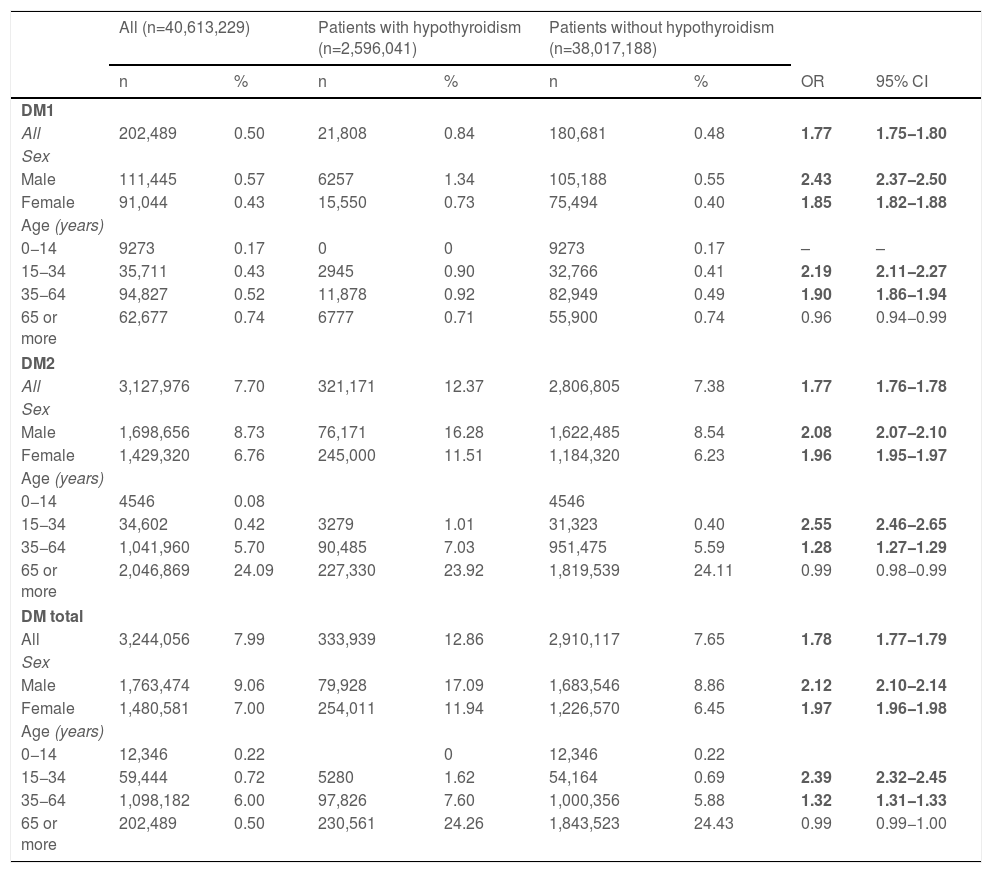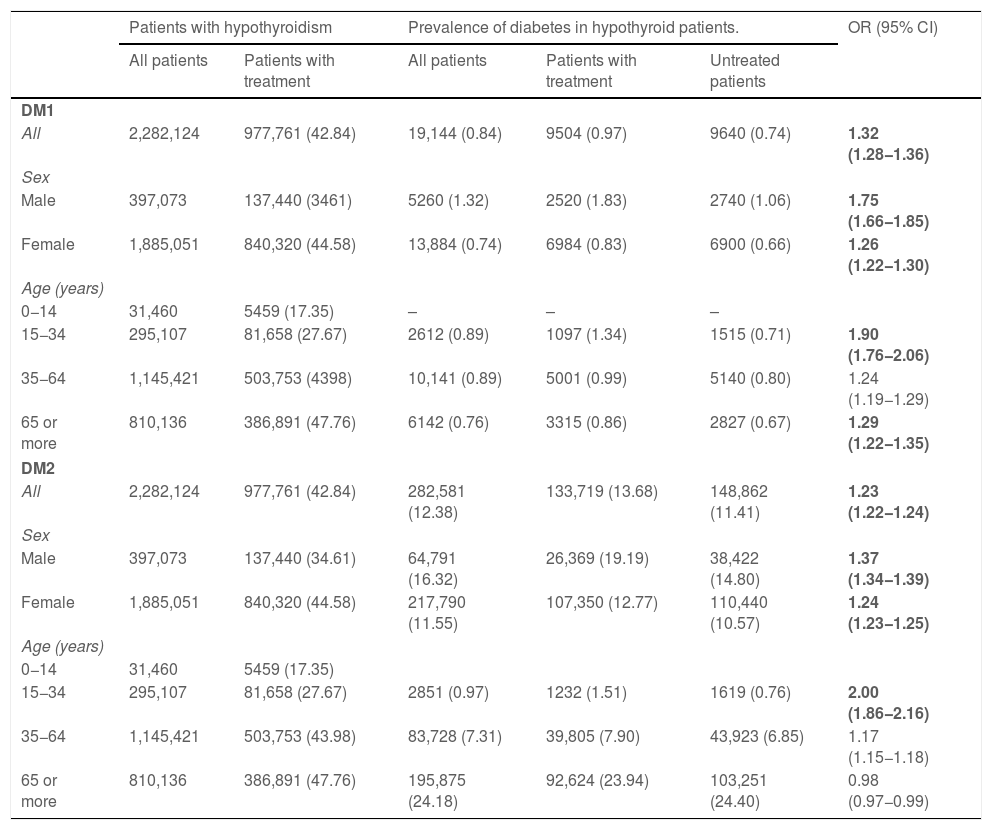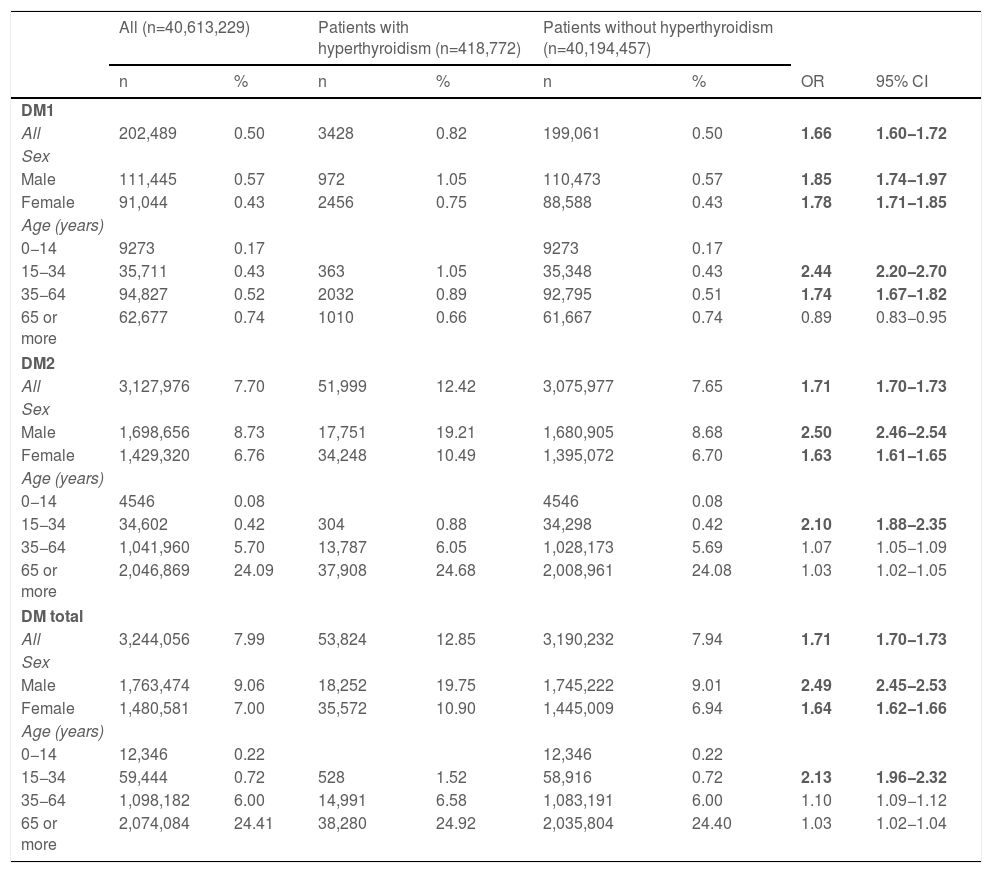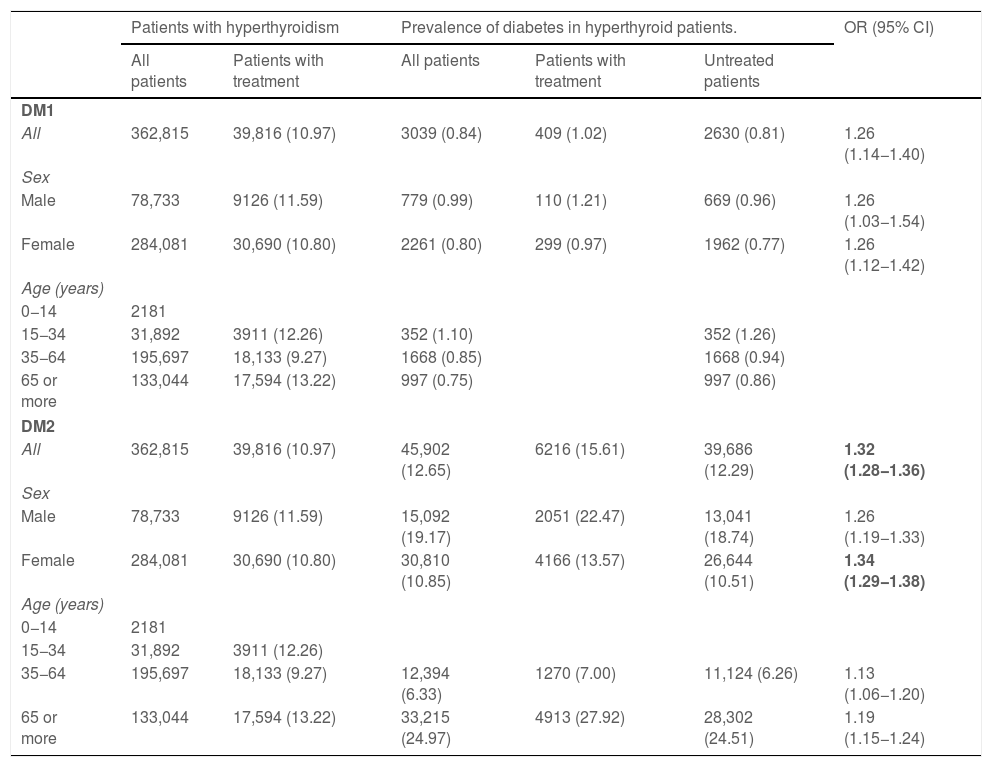To describe the prevalence and relative risk of diabetes in the population with hypothyroidism and hyperthyroidism.
MethodsA retrospective study was carried out using the Primary Care Clinical Database (BDCAP) of the Ministry of Health. Relative risks (OR) and their 95% confidence intervals (CI) were calculated for type 1 (T1D) and type 2 (T2D) diabetes.
ResultsIn the group of 2,596,041 hypothyroid patients, we found an OR of 1.77 (1.75−1.80) for T1D, and 1.77 (1.76−1.78) for T2D. This elevated risk was observed in both men and women. Hypothyroid people over 65 years of age had a near neutral risk of T1D (0.96 [0.94−0.99]) and T2D (0.99 [0.98−0.99]). Hypothyroid patients receiving replacement therapy showed a higher risk of T1D (1.32 [1.28−1.36]) and T2D (1.23 [1.22−1.24]) compared to untreated hypothyroid patients. In the group of 418,772 people with hyperthyroidism, an increased risk of T1D (1.66 [1.60−1.72]) and T2D (1.71 [1.70−1.73]) was also noticed. This risk was observed in both sexes. Those over 65 years of age did not present a high risk of T1D (0.89 [0.83−0.95]) and their risk of T2D was close to neutrality (1.03 [1.02−1.05]). Hyperthyroid patients treated with antithyroid agents had a higher risk of T1D (1.26 [1.14−1.40]) and T2D (1.32 [1.28−1.36]) than those without therapy.
ConclusionPeople registered in BDCAP of both sexes, under 65 years of age, with thyroid dysfunction have an increased risk of suffering from diabetes, especially those on thyroid medication.
Describir la prevalencia y el riesgo relativo de diabetes en personas con hipotiroidismo e hipertiroidismo.
MétodosSe realizó un estudio retrospectivo utilizando la Base de Datos Clínicos de Atención Primaria (BDCAP) del Ministerio de Sanidad. Se calcularon los riesgos relativos (OR) y sus intervalos de confianza (IC) al 95% para diabetes tipo 1 (DM1) y tipo 2 (DM2).
ResultadosEn el grupo de 2.596.041 pacientes hipotiroideos se encontró un OR de 1,77 (IC 95%: 1,75–1,80) para DM1 y de 1,77 (IC 95%: 1,76–1,78) para DM2. Este elevado riesgo se observó tanto en hombres como en mujeres. Las personas hipotiroideas de más de 65 años presentaron un riesgo prácticamente neutro de DM1 (0,96 [IC 95%: 0,94–0,99]) y DM2 (0,99 [IC 95%: 0,98–0,99]). Los hipotiroideos en tratamiento sustitutivo mostraron un mayor riesgo de DM1 (1,32 [IC 95%: 1,28–1,36]) y DM2 (1,23 [IC 95%: 1,22–1,24]) en comparación con hipotiroideos no tratados. En el grupo de 418.772 personas con hipertiroidismo se observó también un riesgo incrementado de DM1 (1,66 [IC 95%: 1,60–1,72]) y DM2 (1,71 [IC 95%: 1,70–1,73]). Este riesgo se observó en ambos sexos. Los mayores de 65 años no presentaron riesgo elevado de DM1 (0,89 [IC 95%: 0,83–0,95]) y su riesgo de DM2 fue cercano a la neutralidad (1,03 [IC 95%: 1,02–1,05]). Los hipertiroideos tratados con medicación antitiroidea presentaron un mayor riesgo de DM1 (1,26 [IC 95%: 1,14–1,40]) y DM2 (1,32 [IC 95%: 1,28–1,36]) que los no tratados.
ConclusiónLas personas registradas en BDCAP de ambos sexos, menores de 65 años, con disfunción tiroidea presentan un riesgo incrementado de padecer diabetes, especialmente los que se encuentran en tratamiento farmacológico.
Artículo
Comprando el artículo el PDF del mismo podrá ser descargado
Precio 19,34 €
Comprar ahora











